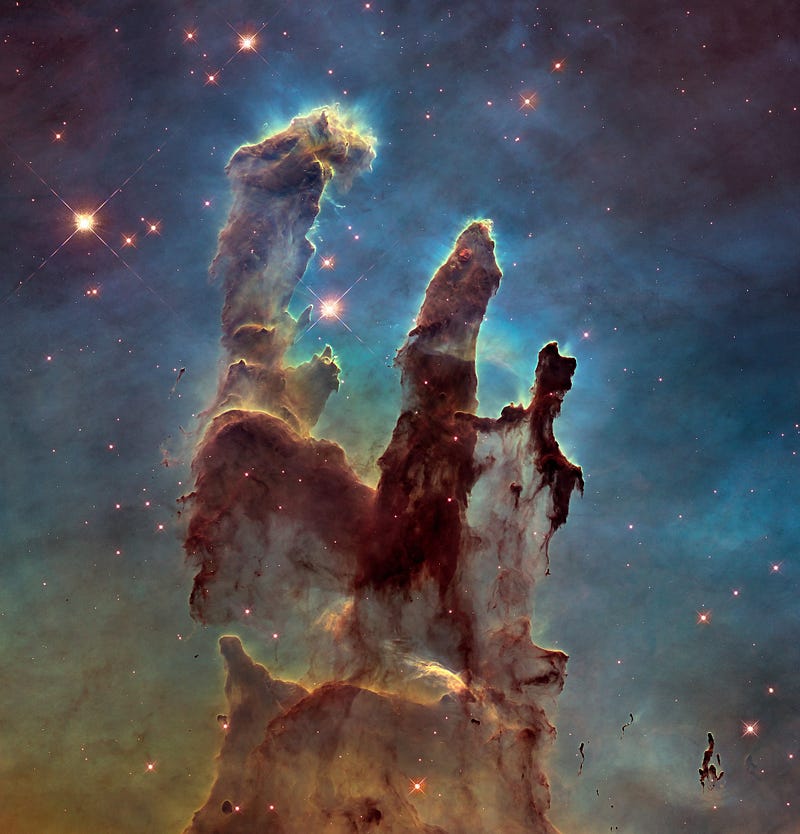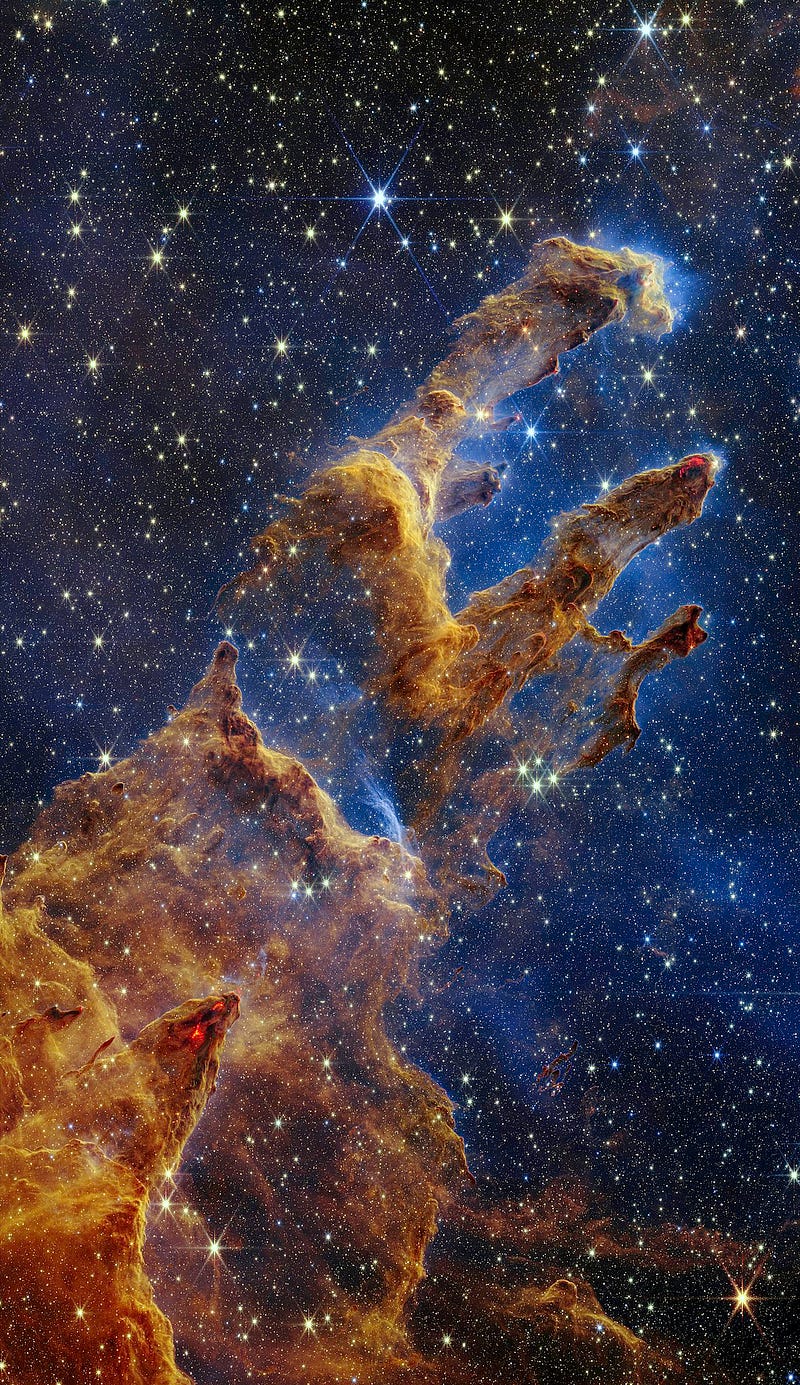Spectacular New Images of the Pillars of Creation from Webb
Written on
Chapter 1: The Pillars of Creation Unveiled
The Webb Telescope has recently captured breathtaking images of the Pillars of Creation, known as one of the most stunning celestial formations in the universe. This latest visual revelation comes 27 years after the Hubble Telescope first documented this remarkable structure, allowing researchers to explore a specific segment of the Eagle Nebula with unprecedented clarity.

In 1995, a landmark photograph of the cosmos was taken by two Arizona State University astronomers, who compiled an image from 32 separate shots by the Hubble Telescope. This iconic picture depicted a region of the Eagle Nebula, located 6,500 light-years away, where new stars are born. This image, now known as the Pillars of Creation, showcases three massive columns of dust and gas, illuminated at their edges against the dark expanse of space. The tallest of these "fingers" extends an impressive 4 light-years.
The Pillars of Creation have not only captivated scientists but have also achieved iconic status in the realm of astronomical photography. Subsequent observations have been made with various telescopes, including the Spitzer Telescope in 2007 and the Herschel Space Observatory in 2012. Most recently, the Webb Telescope has turned its advanced capabilities toward the Pillars of Creation, producing stunning images that reveal new details previously unseen.

Red Spheres at the Pillars' Tips
The latest photographs taken by the Webb Telescope reveal vibrant red spheres at the tips of the second and third pillars. These spheres represent young stars, which are pulsating with energy as they form. According to esawebb.org, “These young stars are estimated to be just a few hundred thousand years old,” essentially capturing their birth in stunning detail.
How Stars Are Born
Scientists believe that there are hundreds of stars, aged between 1 to 2 million years, scattered throughout the Eagle Nebula. Stars form when dense clumps of material coalesce in clouds of dust and gas, like those making up the Pillars of Creation. Once a certain mass threshold is crossed, gravity initiates a collapse, heating the material and attracting additional particles, leading to the birth of a protostar.
As the star develops, it may eject jets of hot matter that interact with leftover material in the vicinity, creating visual effects reminiscent of ripples on water behind a moving boat. In the Pillars of Creation, these outflows manifest as wavy lines that resemble flowing lava.

The Advantages of the Webb Telescope
The Webb Telescope, like the Spitzer Telescope and Herschel Space Observatory, utilizes infrared imaging, which is crucial for studying regions like the Eagle Nebula. Unlike visible light, which scatters on dust particles, infrared radiation penetrates these clouds, allowing for more detailed observations. This capability is vital for scientists examining "star nurseries," as it helps validate or challenge existing theories of star formation.
The first video delves into the spectacular visuals of the Pillars of Creation captured by NASA's Hubble and Webb Telescopes, showcasing their unique features.
The second video offers a guided tour of the Webb Telescope's findings in the Pillars of Creation, providing insights into this celestial phenomenon.
Source: ESA, Science Alert
The first hyperrealistic sculpture of Jesus. The model was the Shroud of Turin!
Cool that you made it to the end of this article. I would greatly appreciate it if you could acknowledge the effort put into it with some claps or consider following me. A tip would also be wonderful! Thank you!